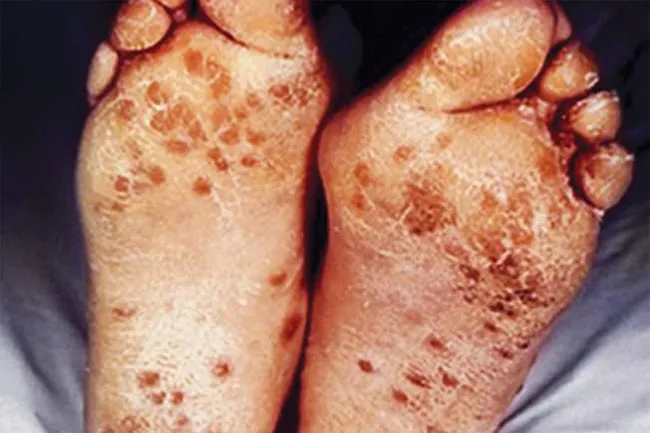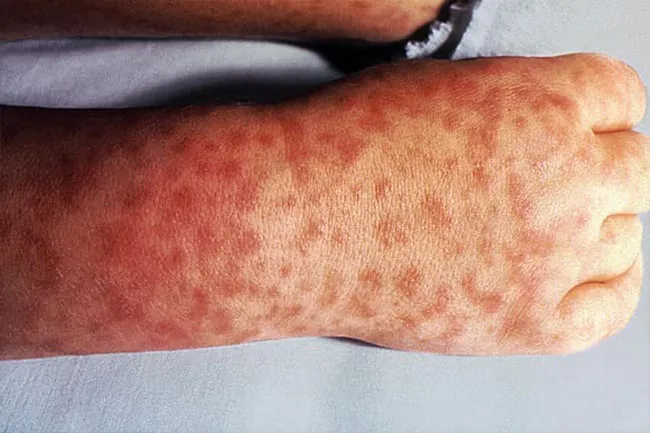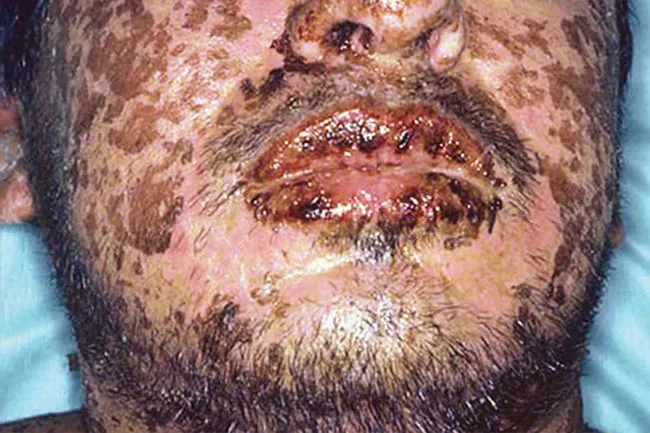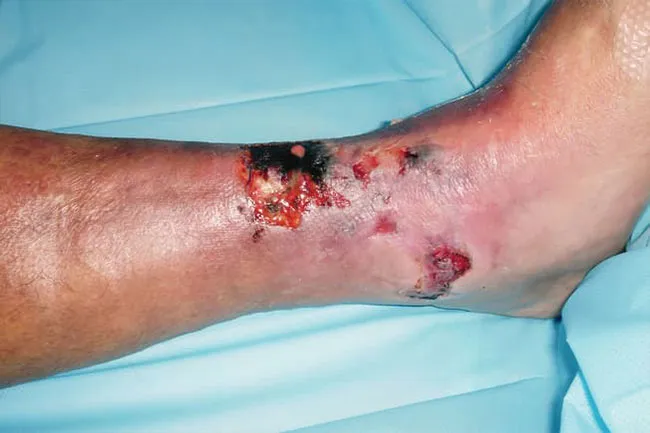Risky or Not?

Skin rashes take lots of different forms. You might have patches of red skin, or you might see welts or blisters. A rash might show up on part of your body, or all over. Sometimes, a salve you buy over the counter can take care of it. But a few skin rashes come from illnesses that can endanger your life if you don’t get to the doctor or ER. Here’s a look at the main ones you should watch out for.
Meningococcal Meningitis

Meningococcal meningitis makes the tissue around your brain and spinal cord swell. You may catch it from someone nearby who has it, and it can make you seriously ill within hours. It’s fatal without quick action. About half the people who have it get a skin rash. Breathing trouble or a sore throat might be your first symptoms. Other signs could be a fever, headache, vomiting, or confusion. Your doctor will likely give you antibiotics.
Toxic Shock Syndrome

Toxic shock syndrome is rare. It may bring to mind cases linked to tampons, but skin wounds (including from surgery) can also let in the bacteria that cause it. It might give you a rash like sunburn, mainly on your palms or the soles of your feet. It can also cause a fever, low blood pressure, vomiting, diarrhea, confusion, headaches, and red eyes, mouth, and throat. Antibiotics are the main treatment, but you may need other medicine.
Rocky Mountain Spotted Fever

A bite from a tick can give you Rocky Mountain spotted fever. It can be fatal if it isn’t treated within 5 days of your first symptoms. You might first have a headache, fever, or nausea, and you might see swelling around your hands or eyes. A rash would come next. It would start with small, flat pink spots on your wrists, forearms, and ankles, then spread. Red or purple spots could follow. Your doctor will give you an antibiotic.
Stevens-Johnson Syndrome

Stevens-Johnson syndrome makes your skin cells die and peel off. It’s usually a reaction to medicine. It may start with fever, coughing, and aches. Then you’ll get a red or purplish rash, and your skin will peel. That may begin on your face, then spread. It could also go into your eyes, mouth, airways, or genitals. Your doctor will change the medicine causing the problem, and you’ll need burn treatment, pain medicine, and maybe more.
Toxic Epidermal Necrolysis

Toxic epidermal necrolysis and Stevens-Johnson syndrome are both severe allergic reactions to medications or infections. They have the same symptoms and treatment. If your skin is peeling from 10% or less of your body, doctors say that’s Stevens-Johnson. If it’s 30% or more, that’s toxic epidermal necrolysis. In between, it’s an overlap. Both conditions can lead to long-term skin problems. At the worst, they could cause organ failure.
Staphylococcal Scalded Skin Syndrome

Anyone can get staphylococcal scalded skin syndrome, but it mainly affects infants and children less than 5 years old. If your child has kidney disease or a weak immune system, they’re more prone to get it. At first, they may be fussy, tired, or have a fever. Then their skin will start to peel, possibly over a lot of their body. They’ll probably have to go to the hospital. They’ll give them antibiotics, and their skin may need salves or bandages.
Pemphigus Vulgaris

Pemphigus vulgaris makes your immune system attack your skin or mucous membranes. It mainly affects people who are middle-aged or older. Mouth sores may come first. Then you may get blisters on your skin or genitals. If they break open, they can get infected. Your doctor will give you antibiotics and other drugs, and your skin may need dressings like those used for burns. If pemphigus isn’t treated, it can be fatal in about 5 years.
Contagious or Not?

Meningococcal meningitis is the main one of these rashes that’s contagious. You mainly get it from someone close by, through things like coughing or kissing. The germs than cause staphylococcal scalded skin and toxic shock syndromes go from person to person, but many people have them on their bodies with no problem. Rocky Mountain spotted fever and pemphigus don’t go person-to-person. The other rashes don’t come from germs people carry.
DRESS Syndrome

Drug reaction with eosinophilia and systemic symptoms (DRESS) is a rare condition in which you’re very sensitive to a medication. It can happen 2-8 weeks after you take the drug that triggered the reaction. Along with the skin symptoms, you may have a fever, feel sick, and have problems with your internal organs, such as your liver, kidneys, or lungs. The key to treatment is getting you off the medicine that caused the problem.
Necrotizing Fasciitis

This “flesh-eating” bacterial infection can spread quickly, killing tissue in your body. At first, you might feel like you have the flu and notice redness around the infected area, which would hurt and may feel warm. You may get skin blisters that feel hot, and you may get dehydrated and have a high fever. You’d need treatment (usually antibiotics you get by IV and surgery to remove dead tissue) right away so you don’t go into shock.
Life-Threatening Skin Rashes
This tool does not provide medical advice. See additional information: 
© 1996-2024 WebMD, LLC. All rights reserved.
